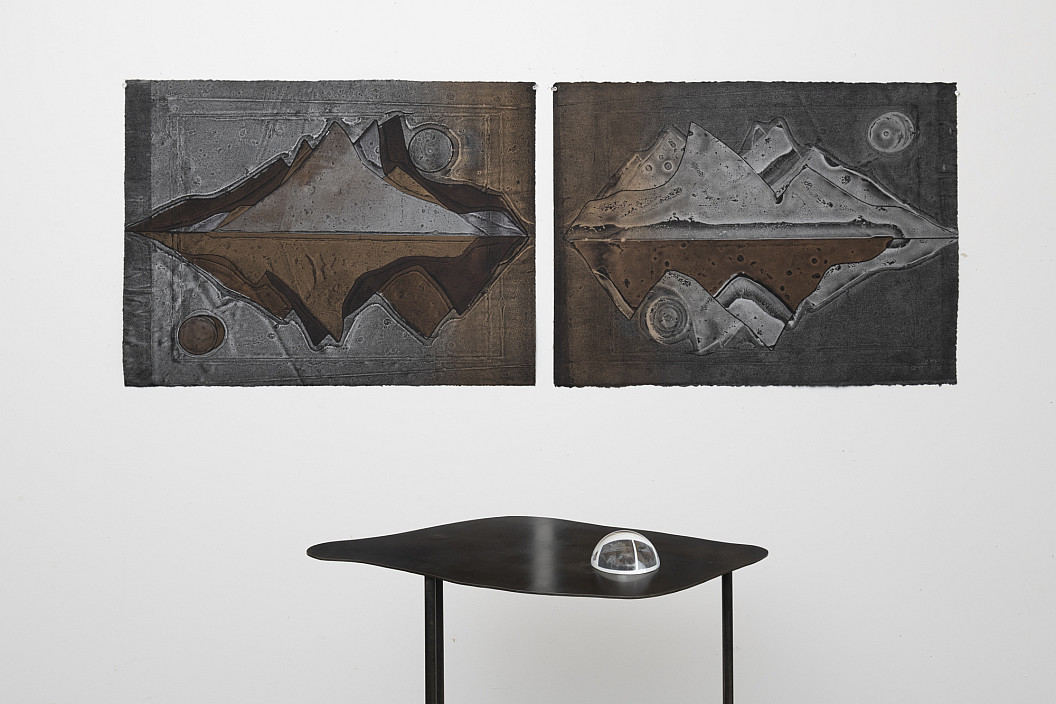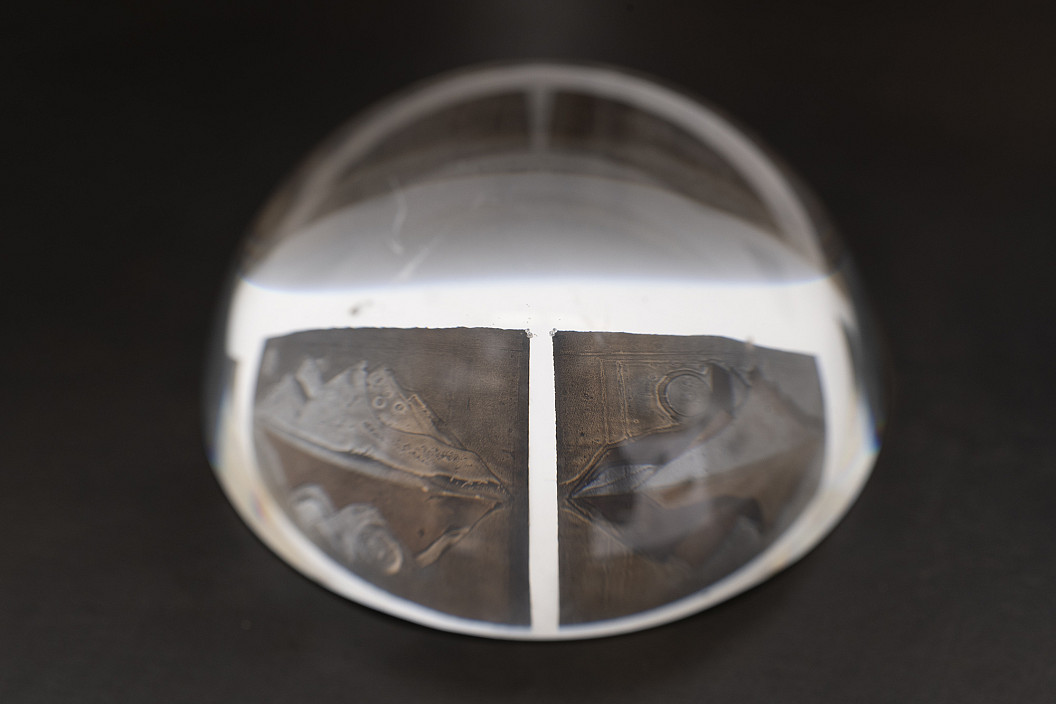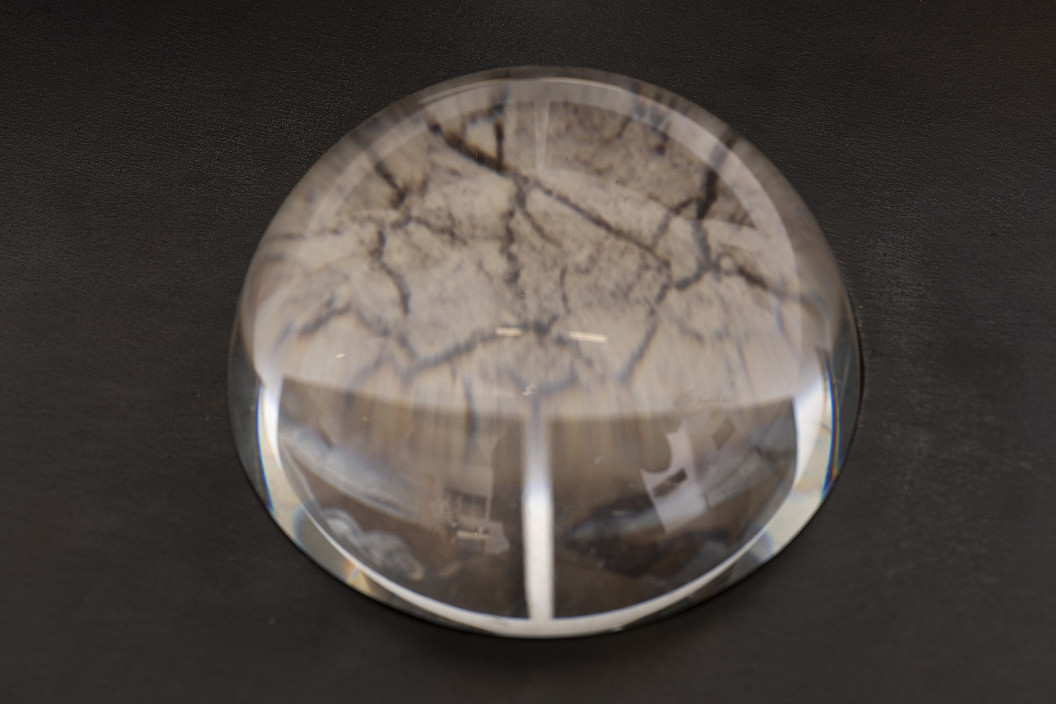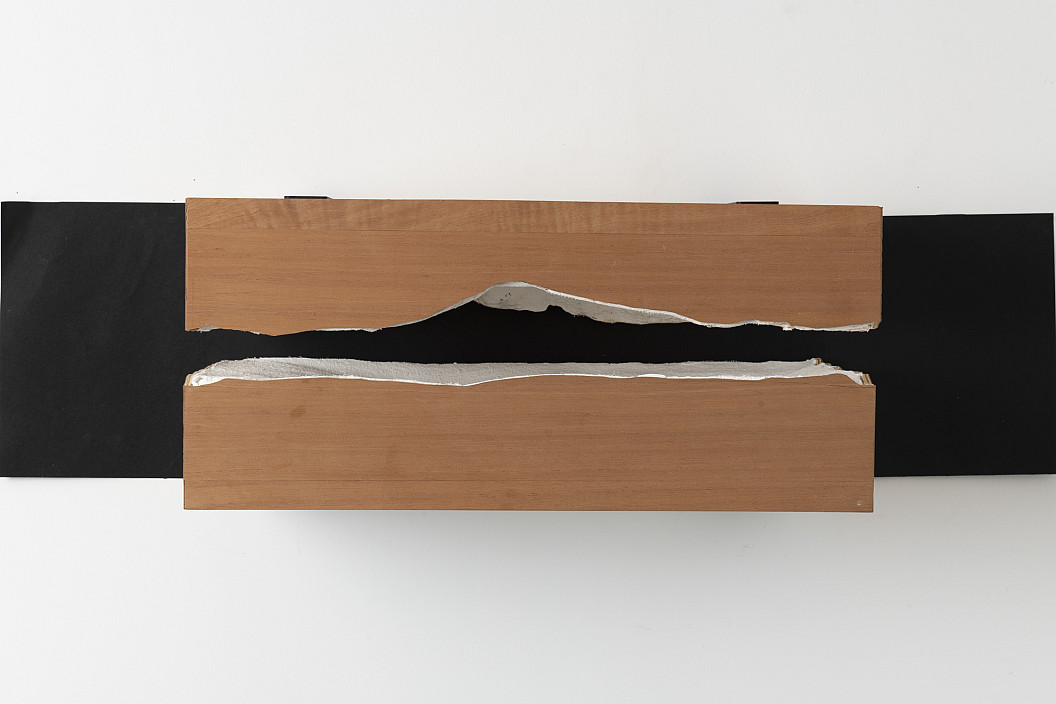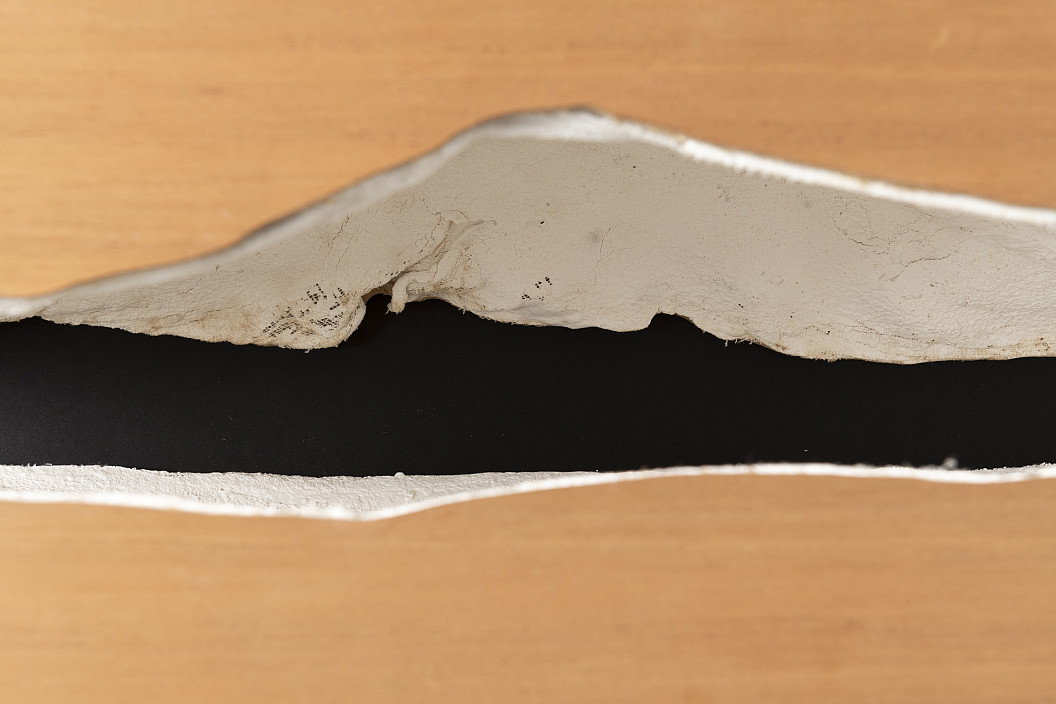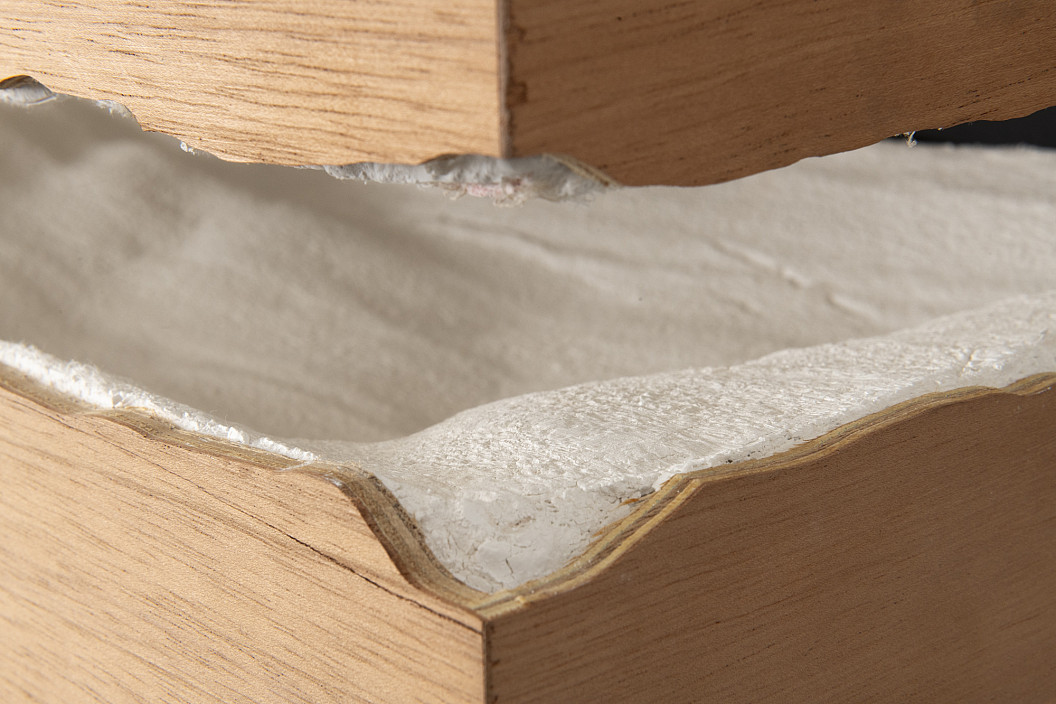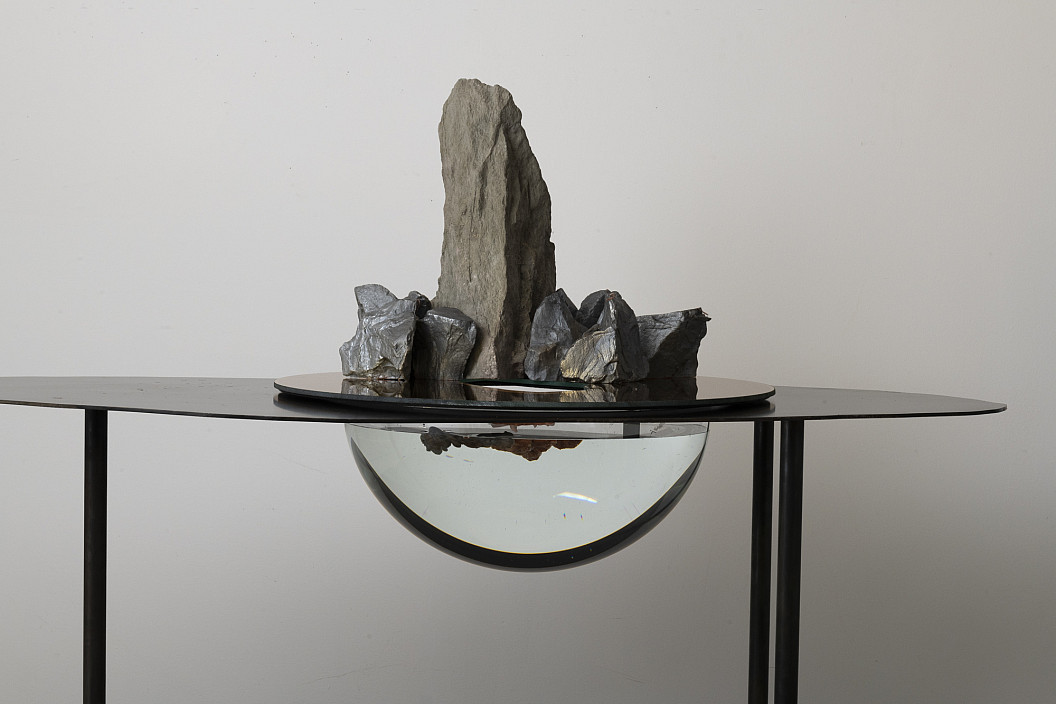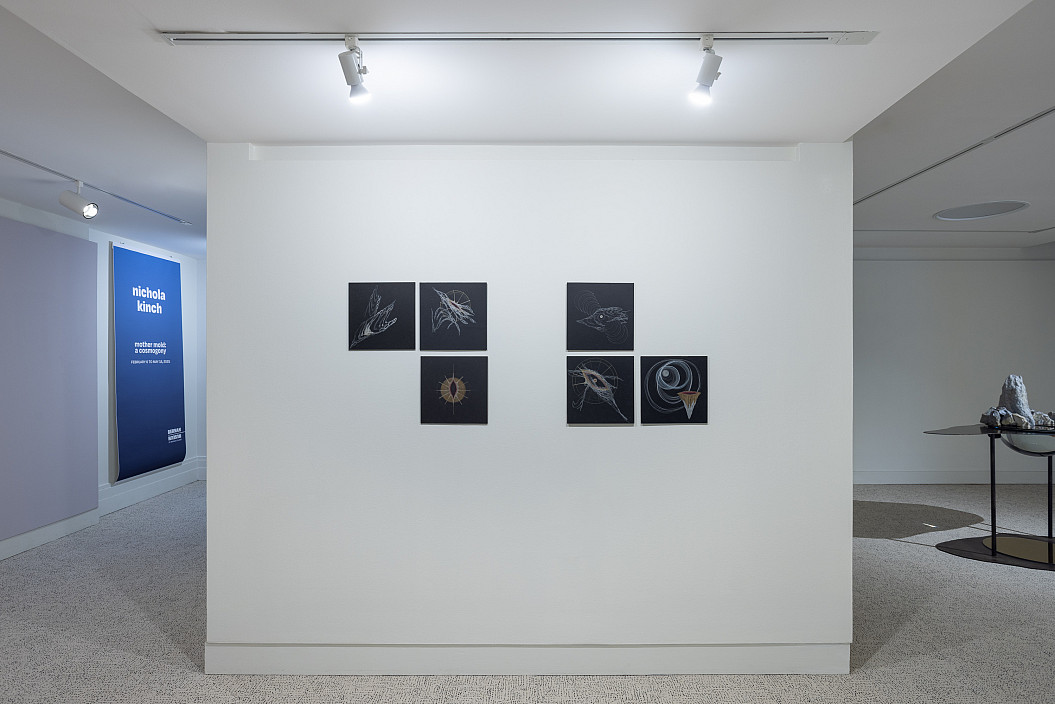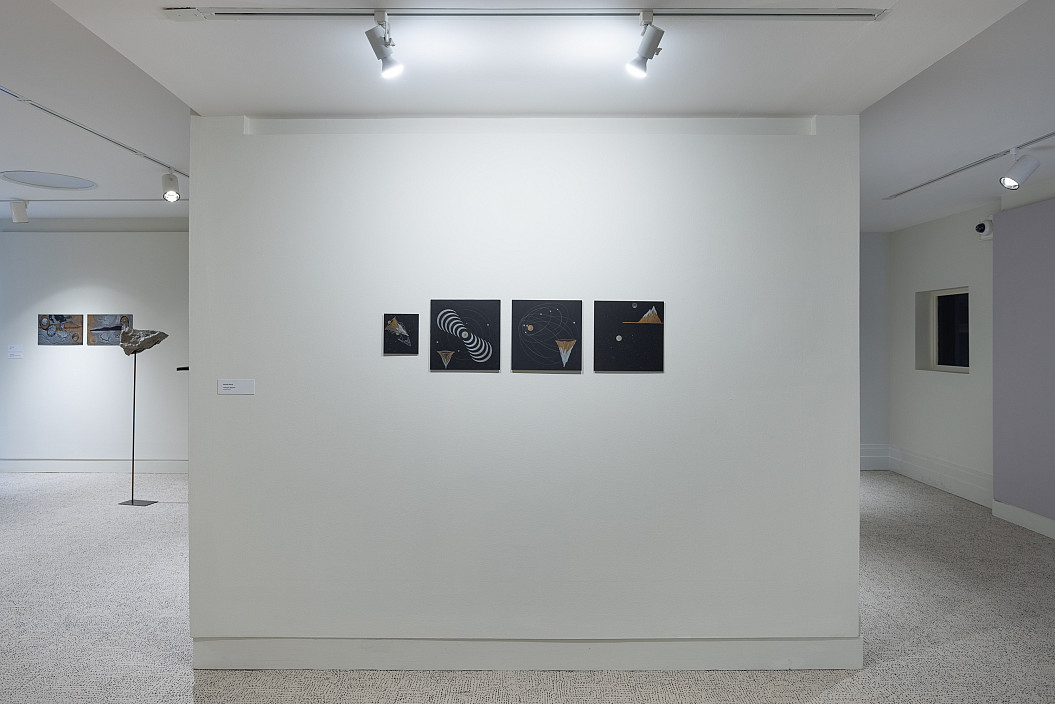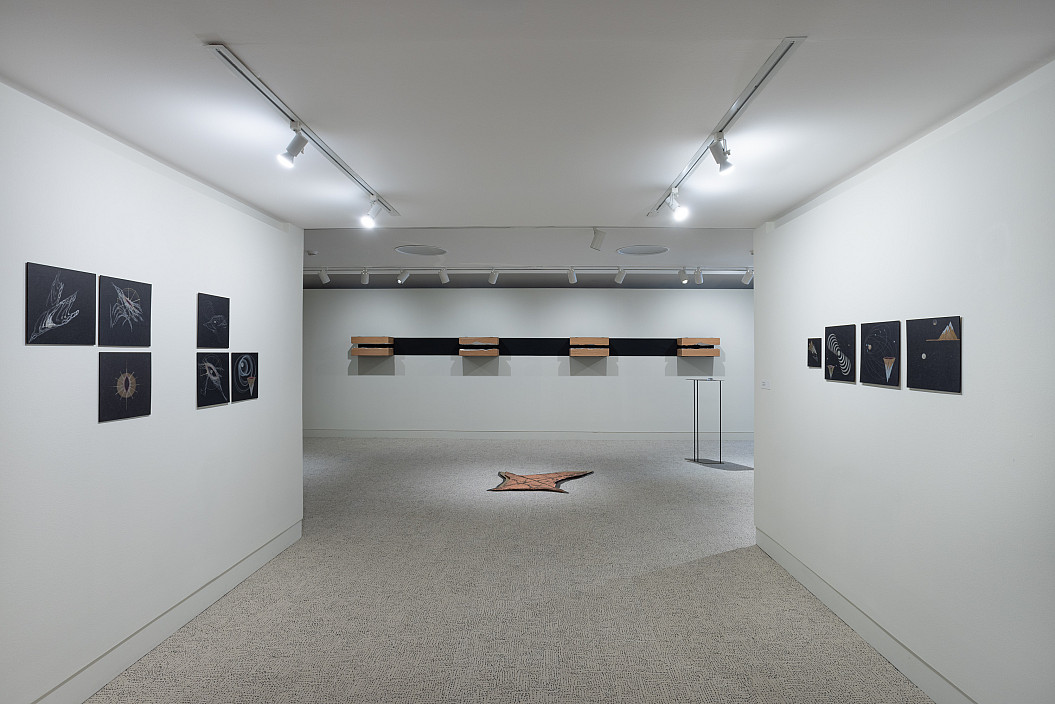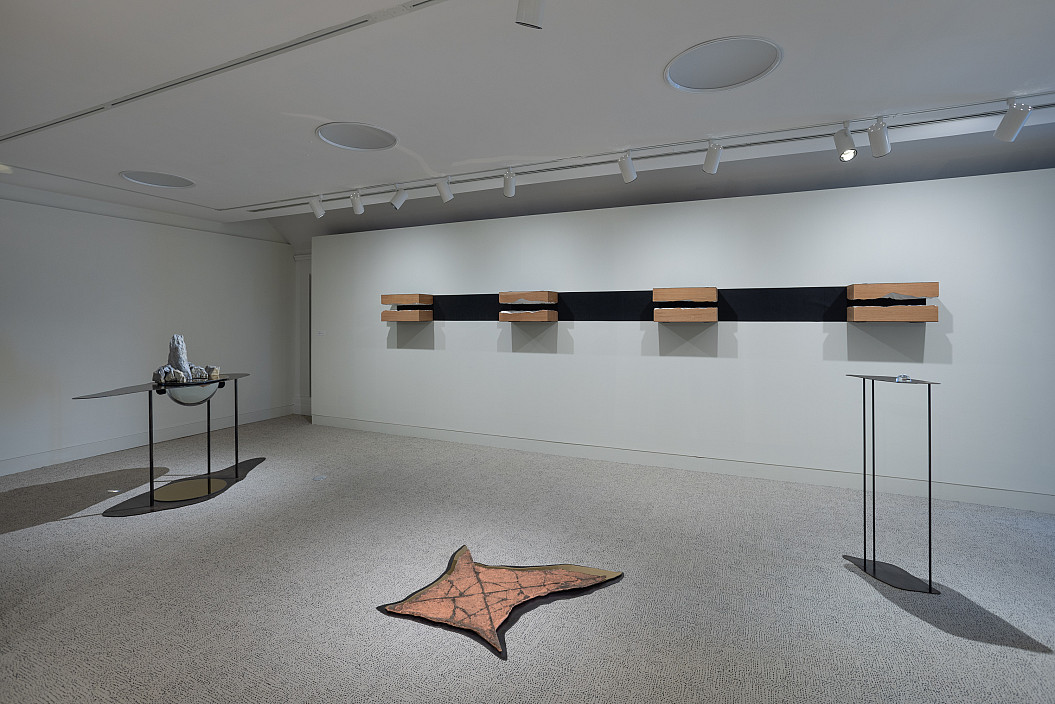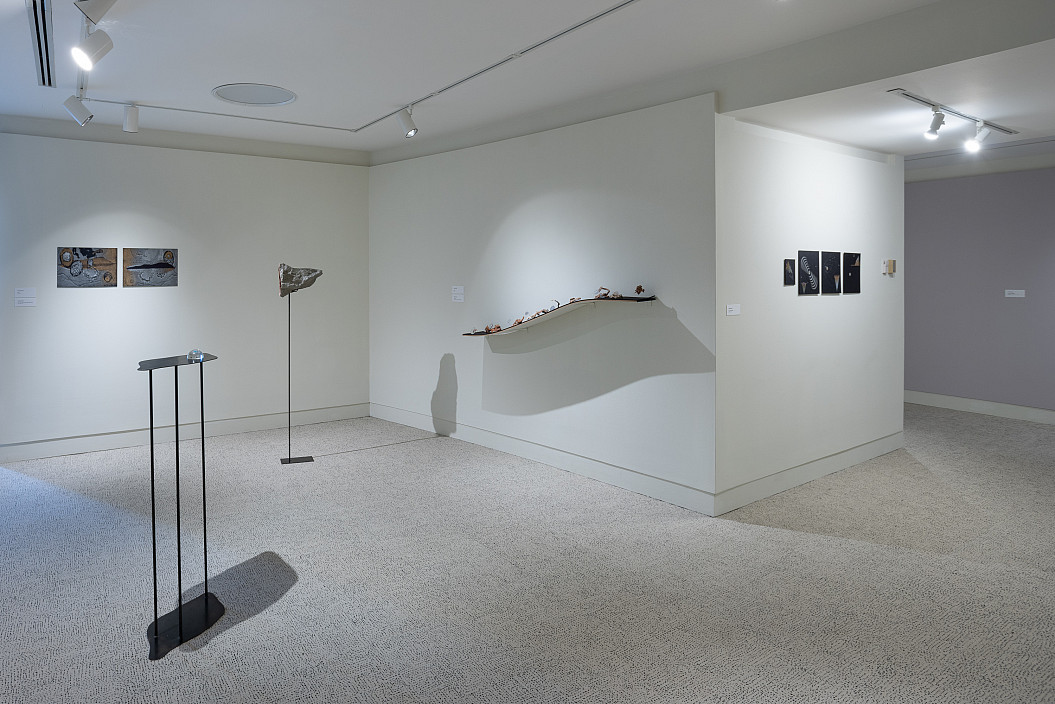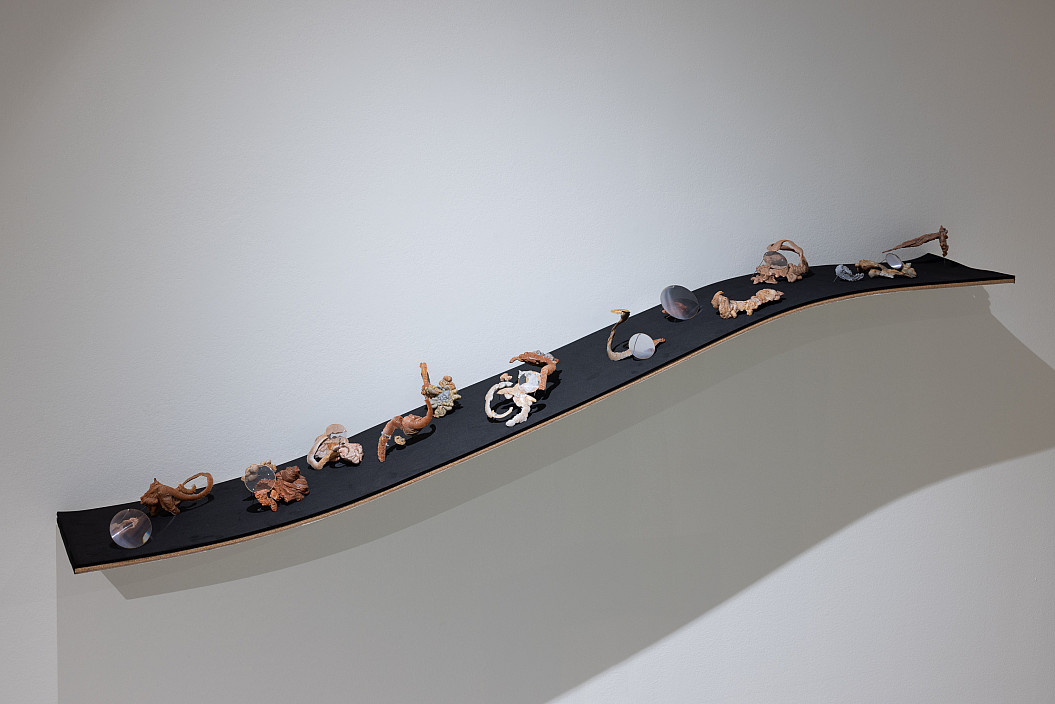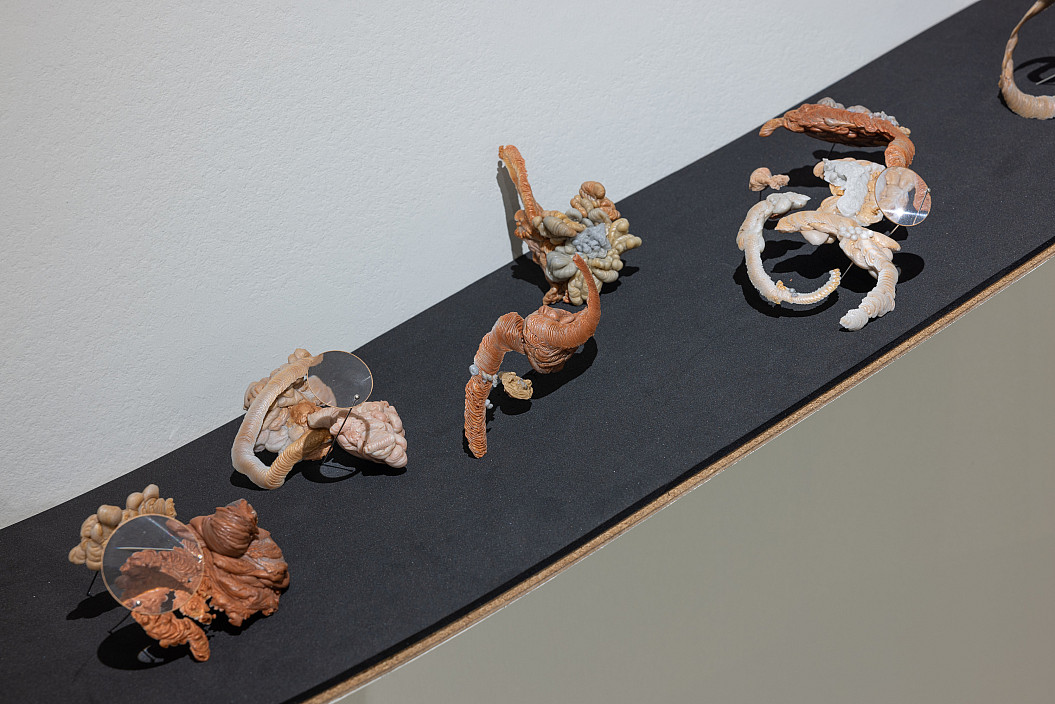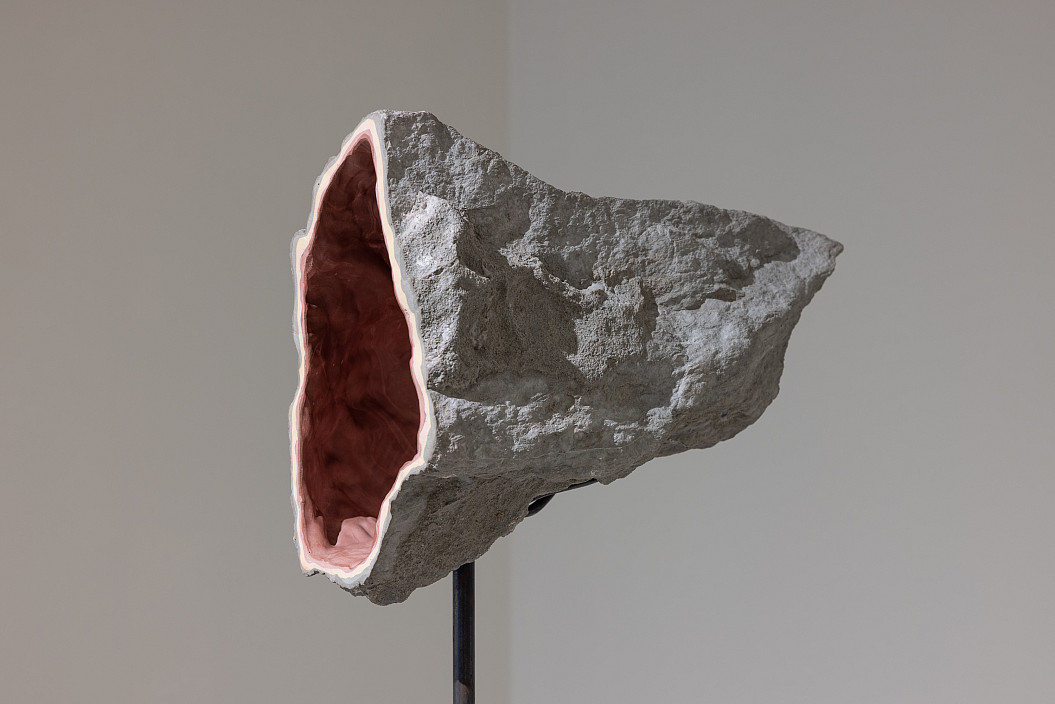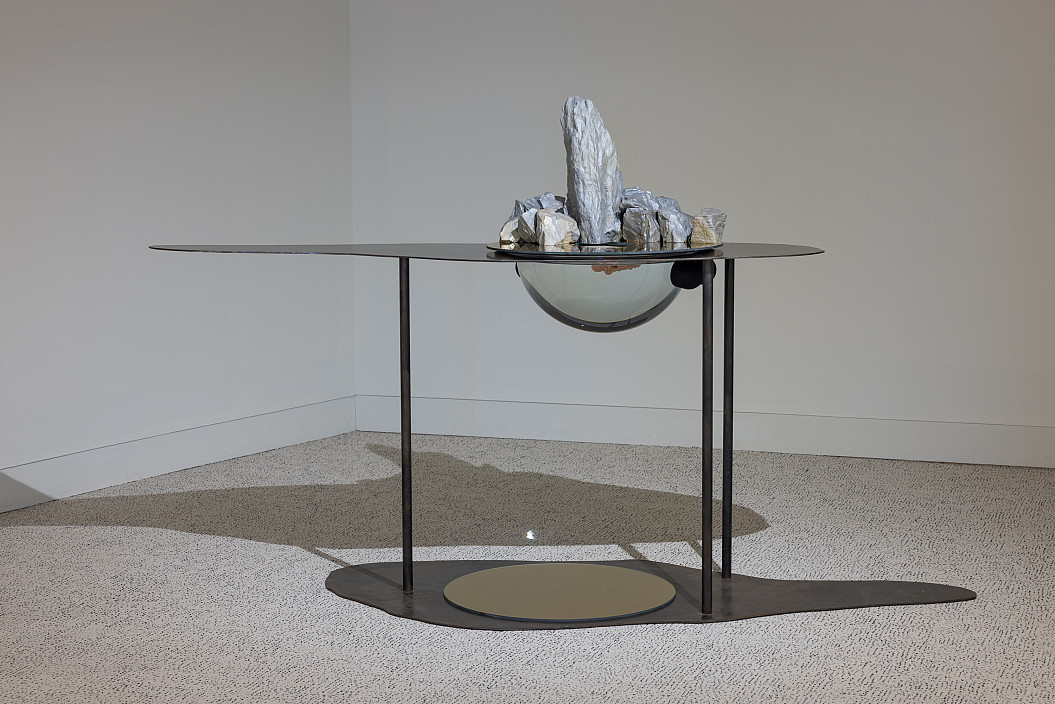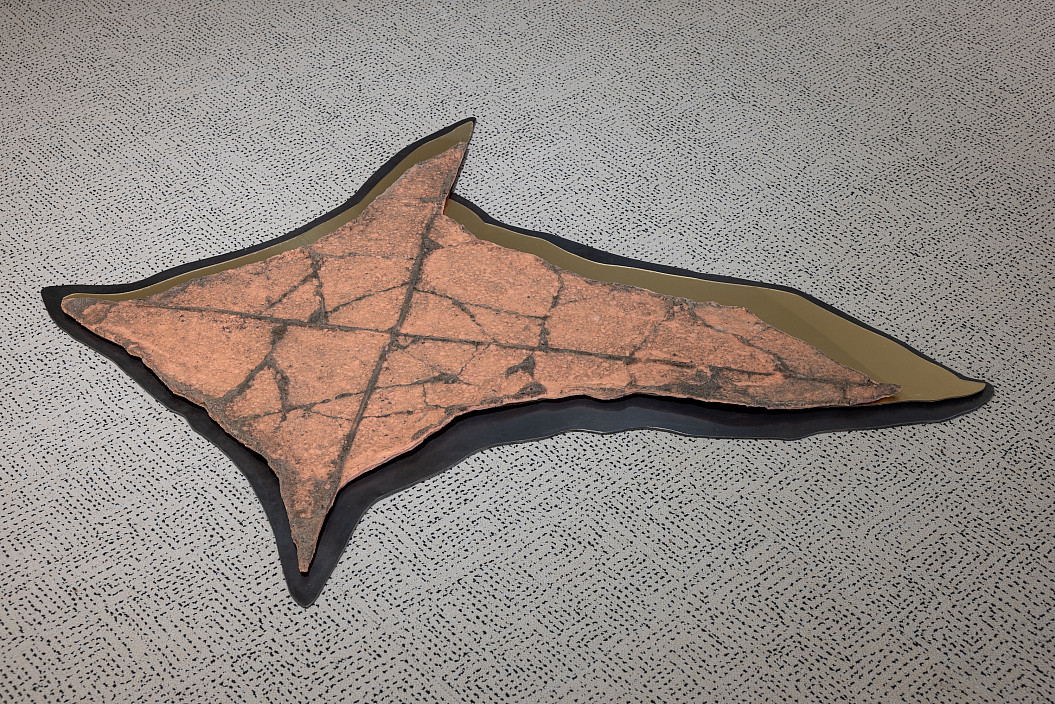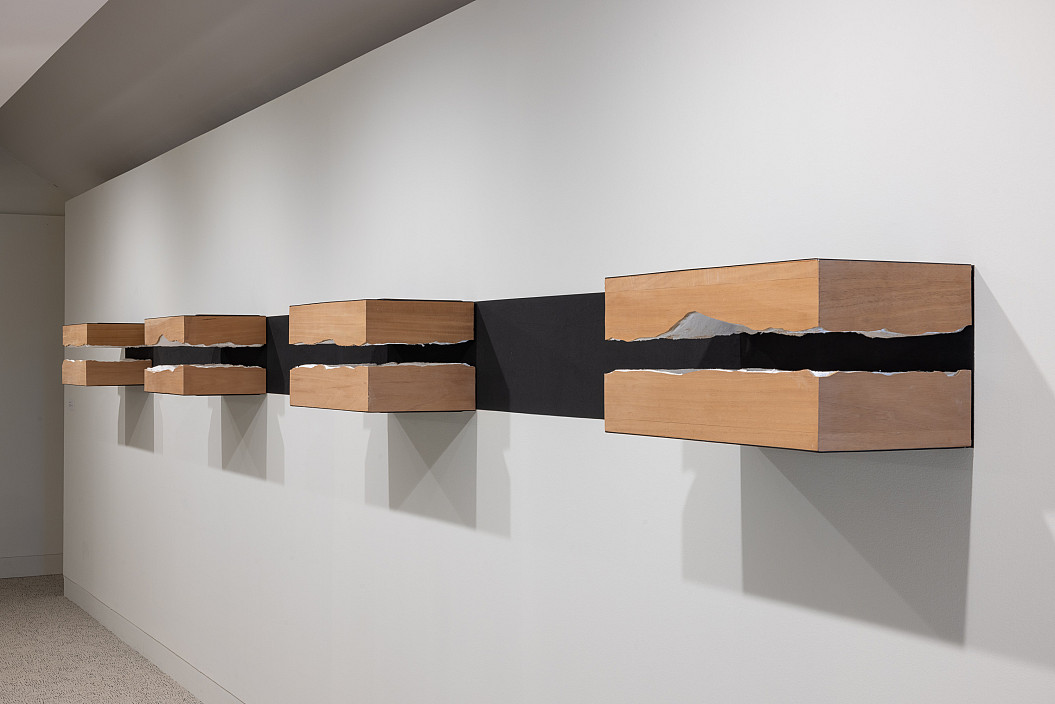nichola kinch
mother mold: a cosmogony
mother mold: a cosmogony is a reflection on the birth of a universe. The works in this exhibition narrate a creation story, unfolding without boundaries and inviting questions about the perceptions and frameworks that define us. nichola kinch envisions an abstract landscape through drawing, printmaking, and sculptural manipulation of glass, water, wax, silicone, and metal to shape forms, both raw and refined. Transformations of material states—their magnification, distortion, and refraction—imagine a generative world beyond conventional social hierarchies, where forms and ideas flow freely.
In sculptural practice, a “mother mold” provides structure and strength to the process of casting, making possible multiple impressions. Here, the artist has cast rocks from wax, resulting in a geology of solidity, grandeur, and timelessness. Yet the hollow interior of the exhibition’s eponymous work—mother mold—testifies to the act of fabrication; our world may be a product of physical and elemental interactions, but also of the social and environmental agency we hold as its stewards and inhabitants. In this cosmogony—an alternate interpretation of our universe—processes of making invite self-reflection, offering new ways to understand the forces that shape us, our connections to each other, and our roles in conceiving a hopeful future.
mother mold: a cosmogony was curated by Emelia Bowen, Hayden James, and Caroline Tilson, members of the 2024-25 Museum Studies Curatorial Practices Seminar.
About the artist
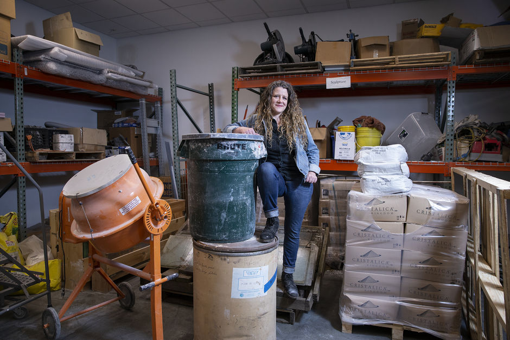
My creative practice revolves around the use of historical and contemporary technologies to explore image and image production as finite and concrete occurrences. This overarching principle propels a research agenda that spans pre-photographic practices to computer aided design and manufacturing and centers on the creation of poetic and fantastical objects and installations that explore image production as a metaphor for a variety of fictional constructs.
I am interested in the moments in which we, as viewers, become aware of image as a mediated production. My work of the past several years takes root in the research of Victorian era image production, early photographic developments, and the advent of moving image machines. I have a particular fascination with animation machines and optical toys. The physicality of these devices, and the purposeful interaction required to operate them make palpable the power and limits of visual perception. The deliberate and specific engagement required for the generation of these illusions offer an instance where the producer’s role in the creation of image becomes tangible.
My recent exhibition “Love Stories” at the Fleisher Art Memorial is a collection of animation machines, large format photographs and optical devices, all presenting a rarified image of nature. Each object offers an illusion, a grove of 10 ft trees that pretend to be real but are flat, a phenaksitascope that is dressed up as the moon, and a flock of birds whose flight is powered by a manual crank. The titles all stem from antiquated popular culture and reference a promise, a limitation, or both. Through these objects, and the images they create, I draw parallels between the mediated photographic experience and the construction of romantic thought, in regards to experiences of nature and, perhaps, other love stories we choose to tell ourselves.


